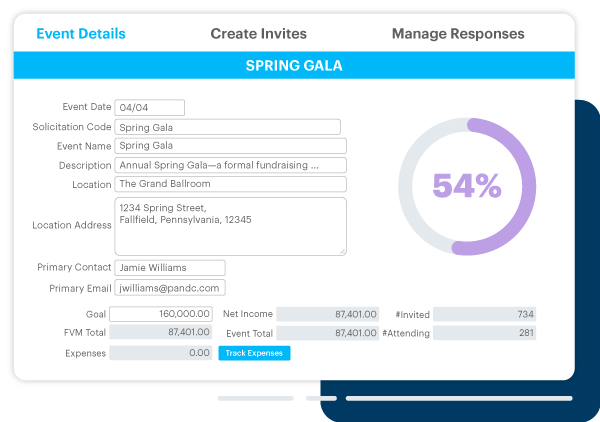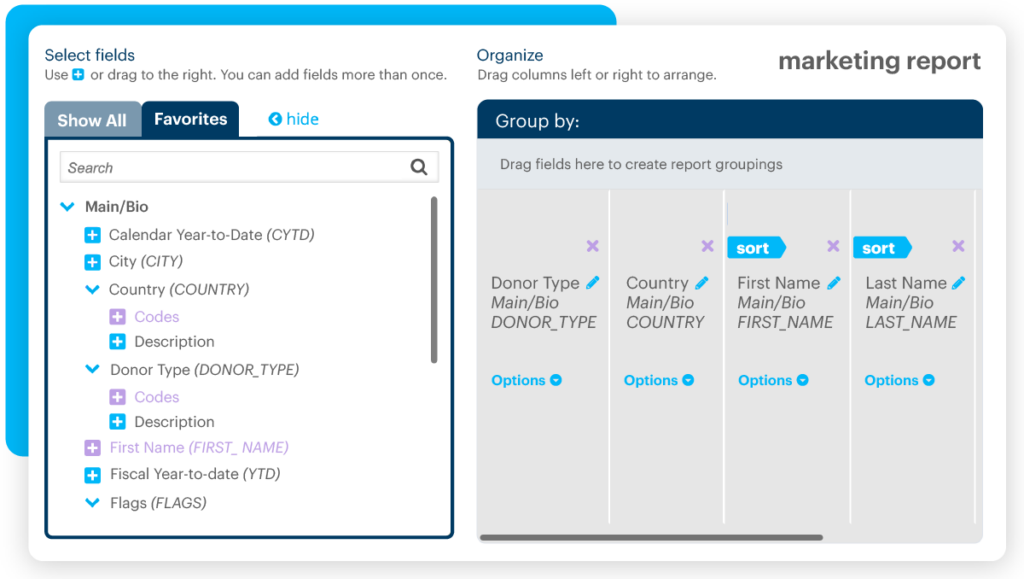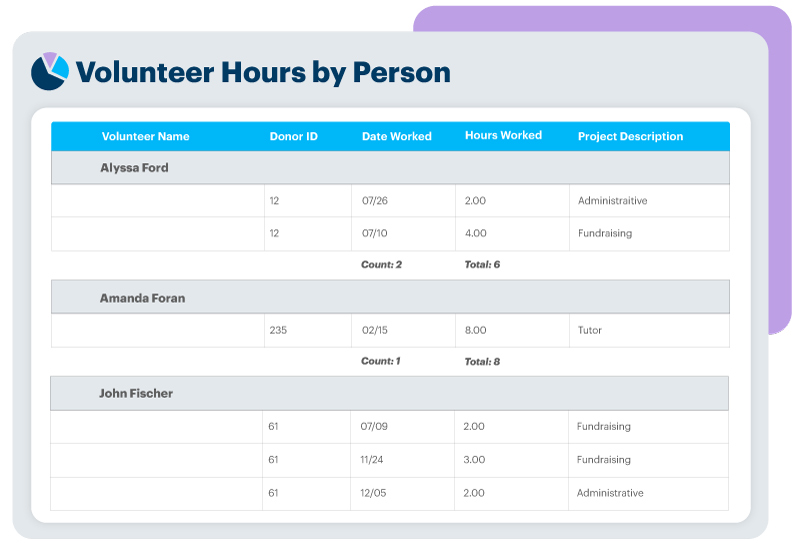Nonprofit Technology & Fundraising Blog
Subscribe to our mailing list

July 15, 2025 | Donor Engagement, Fundraising Operations, Major Donors, Planning
At the heart of every thriving nonprofit is a mission worth sharing—and a nonprofit board and community that believe in it just as deeply. Your nonprofit board is one of your greatest allies in advancing that mission. But too often, nonprofit board responsibilities stall at oversight. Meetings are attended, and reports are reviewed, but the full potential of the board—as storytellers, champions, and relationship-builders—is left untapped.
What if your board members could do more than just fulfill their duties? What if they could energize your board fundraising, amplify your cause, and mobilize your community? That’s exactly what we and nonprofit expert Joan Garry from the Nonprofit Leadership Lab envision in Building a Board of Ambassadors: A 6-Step Guide workbook.
Building a strong nonprofit board is an organizational culture shift, one that moves your board from passive to results-driven.
Let’s break down each of the six steps and how you can implement them to create a board that’s aligned, energized, and ready to lead alongside you!
Every high-impact nonprofit board starts with a strong foundation. These first steps will help you define clear nonprofit board responsibilities and bring together the right mix of people to support your mission with purpose and clarity.
If you want your nonprofit board members to act like ambassadors, you need to define what that means clearly on day one. Too often, nonprofit leaders hesitate to lay out clear board responsibilities. They fear deterring prospective members by being too prescriptive or asking too much, but clarity drives engagement and your mission forward.
Craft a board mission statement that answers: What do you want your board members to feel responsible for? What role should they play in advancing your mission beyond governance?
“Your board member needs to be a connected, spirited representative of your organization. Why do they want to serve on your board in particular?” — Joan Garry
Make a clear list of ongoing tasks once your board mission statement is clear: Define the core activities you expect your board to perform consistently. This can include:
“We want the board to reach out broadly into networks to invite people to get closer to the organization.” — Joan Garry
Pro tip: Include these expectations in your board recruitment materials and onboarding packets to establish strong relationships from the outset.
Think like a coach building a team. A strong nonprofit board includes a mix of talents, lived experiences, and spheres of influence. It’s not enough to have good intentions—you need strategic, multidimensional capacity.
Look for individual strengths such as:
“Be sure to recruit members with different spheres of influence.” — Joan Garry
A diverse board brings access to new communities and ideas. Other qualities of good board members, according to Joan, can include change management, leadership skills, and good communication. Recruiting strategically ensures your nonprofit board represents the full range of expertise and meets your organizational needs.
Once your board is in place, the next step is connection. By deepening your board members’ understanding of your mission and encouraging close staff collaboration, you can build lasting engagement and support long-term board fundraising success.
When board members experience your mission firsthand, they become better equipped to engage in board fundraising and build meaningful relationships.
Ways to connect your board:
The goal is to transform board members from informed observers into emotionally invested advocates. Your board needs more than updates—they need to feel the mission. That happens when you pair storytelling with immersive experiences and real-world context. Bring in guest speakers, invite mission-aligned conversations, and never assume your board’s passion is on autopilot.
Joan’s activation formula: Inform + Enrich + Engage = Ignite
Pro tip: Plan and manage mission-focused board events using DonorPerfect’s events management tool. Track RSVPs, log interactions, and automate post-event follow-ups.

“DonorPerfect is just easy. It will make life easier. Especially with relationships. Not only the building, but the tracking. Being able to get those letters out immediately, being able to link them to your events—it’s just an all-in-one great tool to use.” – Susan S., Development Associate
Strong nonprofit boards thrive when they have solid working relationships with staff, especially when those relationships support shared board responsibilities around fundraising and advocacy.
“A thriving nonprofit has a one-to-one partnership mindset when it comes to the board.” — Joan Garry
These intentional staff–board relationships are operational and strategic. They allow for clear communication, aligned goals, and shared ownership of the mission. But here’s the kicker: board members can’t succeed without internal support. To act as ambassadors, they need tools, insights, and confidence — and it’s the staff’s role to provide those.
Pro tip: Create segmented lists and dynamic donor reports that board members can access in real time, in alignment with your nonprofit’s privacy policies and with role-based user permissions.

With a connected and informed board, it’s time to focus on action and accountability. These final steps offer practical ways to train your nonprofit board, strengthen leadership, and sustain momentum through ongoing evaluation and intentional growth.
Most nonprofit board members are passionate about your cause but aren’t trained fundraisers—and that’s okay. They can still be highly effective in board fundraising roles with the right preparation.
Start with simple confidence-building tasks:
“Each board member should be comfortable talking for 2 or 3 minutes about the organization and why it matters by sharing a brief impact story and an invitation to get involved.” — Joan Garry
Are you looking for more ways to activate your board and transform members into a fundraising powerhouse? Check out our blog post: How to Engage Your Nonprofit Board in Fundraising and Major Gifts.
A strong nonprofit board isn’t something you build once and forget. It’s a living, evolving part of your organization—and maintaining it is one of the most important responsibilities. That means checking in regularly, evaluating what’s working (and what’s not), and continuing to recruit and train with purpose.
A healthy board is nurtured over time, with clear expectations, honest conversations, and a shared commitment to growth.
“When evaluating your board, it is important to look at your board members as individuals and not as a collective. This allows you to ask the hard questions and identify the gaps.” — Joan Garry
Recruitment is an ongoing process—one that should always reflect the kind of board you need to fulfill your mission today and in the future. Consider board members who can support your mission in multiple ways and how you might mobilize them.
Pro tip: Track board service hours to demonstrate how impactful their work is to your mission with DonorPerfect’s volunteer management tools.

A well-trained, well-supported nonprofit board can help your organization thrive, not just through oversight, but through advocacy and action. With this six-step framework and DonorPerfect’s suite of board support tools, you can activate your nonprofit board members as true champions of your mission.
With intentional structure and the right tools, your board can become a dynamic force for advocacy, engagement, and fundraising.
Want to power up your nonprofit board’s involvement in fundraising and engagement? Learn how DonorPerfect supports nonprofits with tools like event planning, reporting, and donor cultivation insights. See the DonorPerfect difference today.
1. What if I have a disengaged board member?
2. What if board members aren’t comfortable asking for money?
3. How can I make board meetings more engaging?
Request your free demo today!
Follow us on social!